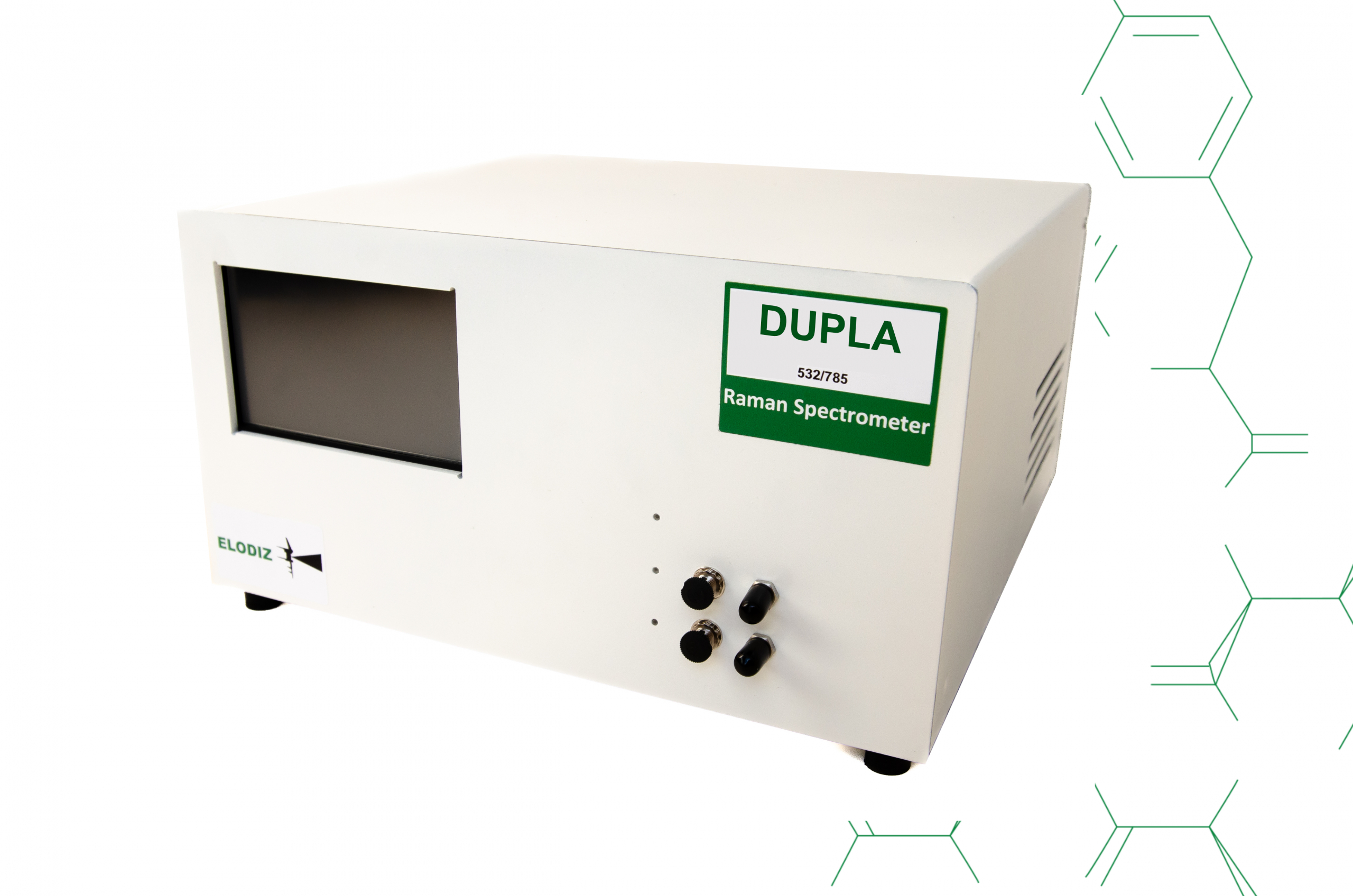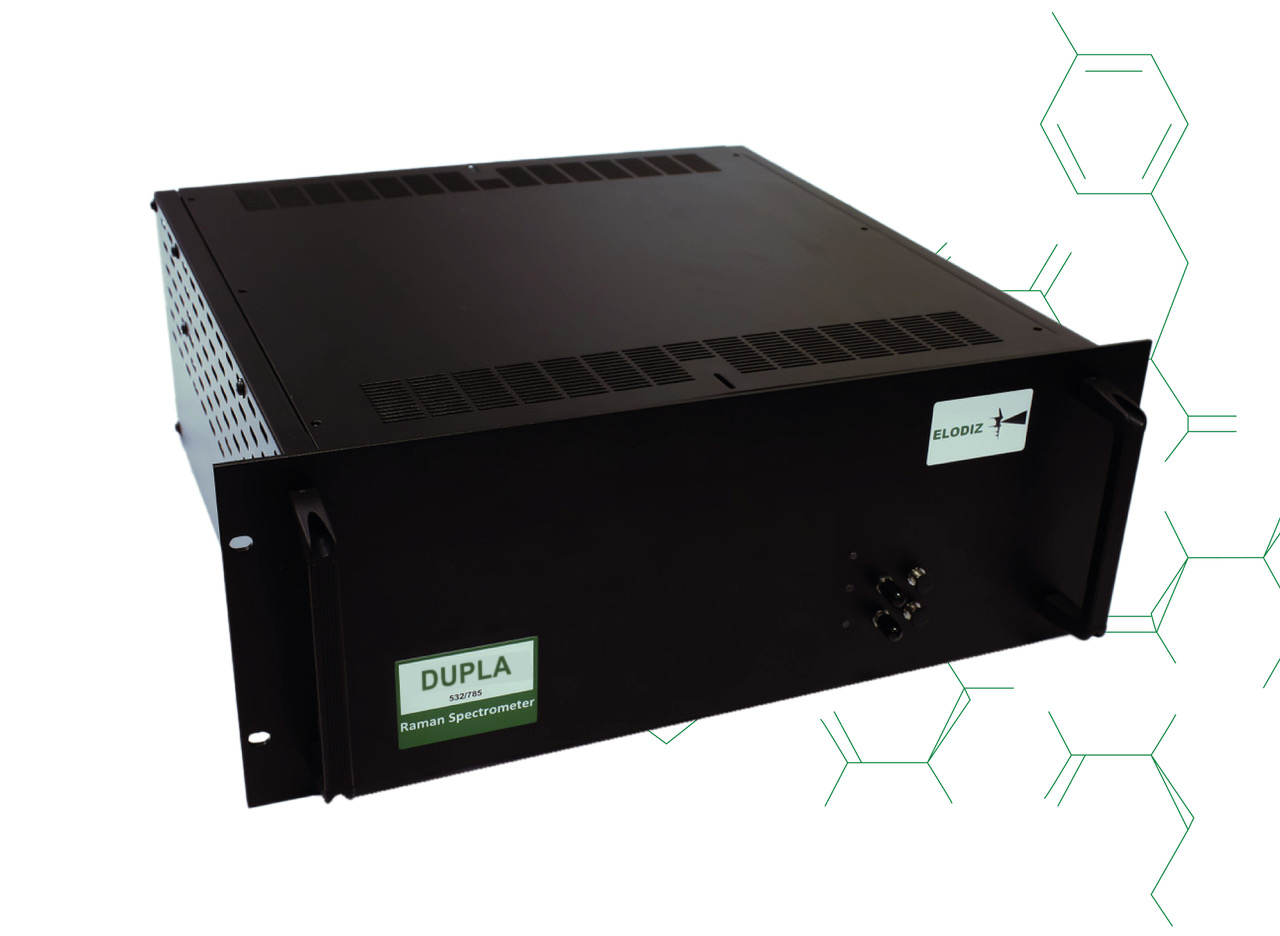Raman systems and the eternal problem of fluorescence
by Dr Enrique Lozano & Dr Yaroslav Aulin
Overview
In the field of spectroscopy, Raman spectroscopy to be precise, the perpetual element that seems to find its way into every Raman related conversation is fluorescence, code name: “Raman’s natural enemy”.
When irradiating a sample with a light source (or to put it simply, when using a monochromatic laser), there are normally a few processes that occur: some of the light is transmitted, some is absorbed and stowed, and other is scattered.
The most significant process a typical spectroscopist would be on the lookout for during such an analysis, is the Raleigh scattering, i.e. the elastic scattering of light (λ= λ excitation); followed by three other processes: the fluorescence (λ= λ emission) and the inelastic (we will call them Raman) scattering – Stokes λ> λexcitation and anti-Stokes λ< λexcitation.
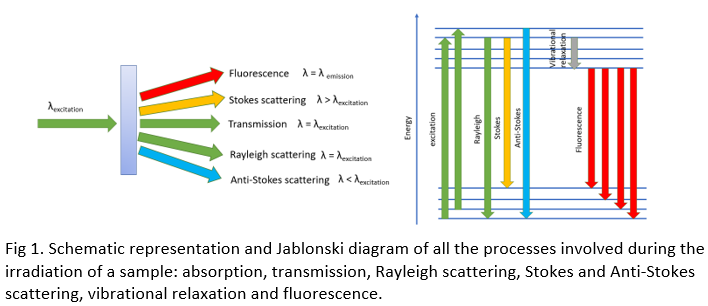
Because Raman scattering is weak, the presence of fluorescence process can generate a strong signal that can hide any Raman signal, or at least offset or distort the baseline of the Raman spectrum.
On the other hand, Raman scattering can affect fluorescence experiments too, e.g. if you run a water solution at λ=450nm, you will certainly recognise a strong Raman signal at 532nm, produced by water. It certainly isn’t simple to completely separate these 2 processes, however, experienced users have learnt to manage these “problems.”
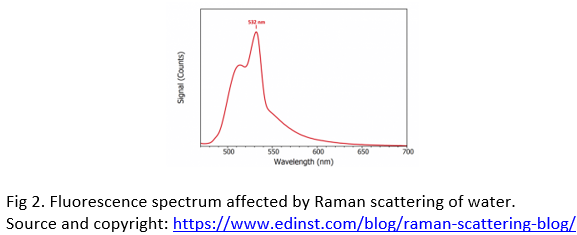
General Strategies
In terms of Raman spectroscopy, the fluorescence background signal is mostly fixed by moving the laser line to areas where there is less contribution from the fluorescence process. The most typical solution is to move towards NIR lasers, with the most popular Raman laser line of 785nm, followed by 1064nm. The utilisation of 785nm lasers gives the advantage of being able to continue using the Si detectors, which are certainly the most effective and broadly used in commercial units. The 1064nm approach provides substantial reduction of fluorescence problems but introduces other challenges, like efficiency of detectors and heat to the samples.
So far, one of the solutions to the problem of background fluorescence interference has been to shift the Raman process towards the UV spectral range. This remedy offers potential benefits in the presence of resonance effects, however, the absorption of the radiation and technique requirements to make efficient readings, create technical challenges to endure. Another successful strategy for the removal of fluorescence has been the use of sequentially shifted excitation at different laser temperatures [US patent US8570507B1]. This subject is still very active today and some of the available strategies (many based on mathematical data manipulation) are very interesting and innovative. Hopefully, in the coming years we will see some exciting progress in this area.
Our Solution
At ELODIZ, we are taking a different approach. During the development of our multichannel system NEEGALA, we have been pondering why not use the fluorescence background information to obtain further and better characterisation of the materials?
Our NEEGALA system uses 2 complementary setups, 532nm and 785nm channels that can be used independently or in-sync. The task to synchronise two simultaneously running Raman channels is nor common, neither easy. The obtained data needs to be processed and the system modified to include new protocols of calibration and data processing, in order to utilise fluorescence.
Having tested our NEEGALA on a number of gemstones it is clear that fluorescence allows to systematically recognise all the gemstones and reproduce the characteristics of each type of gemstone, making it a promising addition to Raman analysis.
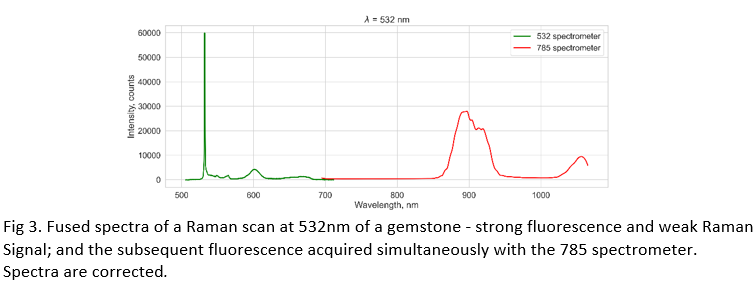
Conclusion
ELODIZ Raman NEEGALA system is a unique Raman device, capable of extending its performance to include the analysis of the fluorescence signature associated with analysed materials. Keep an eye out for Part 2 of this application note!
To find out more about our products please go here.


